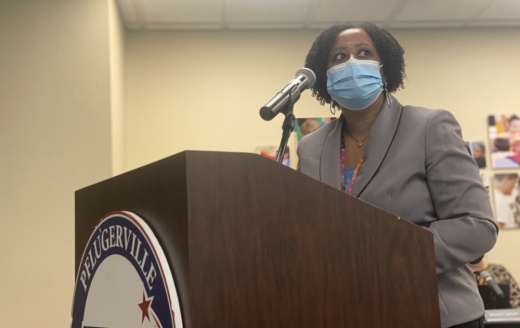The PfISD board of trustees heard an update on plans for the allocation from PfISD Chief Financial Officer Jennifer Land during a Jan. 20 meeting.
Called the Elementary and Secondary School Emergency Relief III fund, the fund allocation as stated by the Texas Education Agency is intended to be used to respond to the COVID-19 pandemic by allowing students and staff to return to school safely and to address student learning loss as a result of COVID-19.
Information from the Texas Education Agency states Texas was appropriated $11.2 billion in April, and PfISD has been allocated $29.7 million, according to district information. PfISD staff began an accelerated stakeholder outreach campaign earlier in 2021 to determine how to utilize the funding.
One of the methods toward determination was the administration of a survey to teachers, students and parents, said Brandy Baker, PfISD's chief academic and innovations officer, last summer.
Throughout the summer, Baker presented findings and and guidelines to the board on the best ways to spend the money.
In July, Baker said allowable expenditures will include grants, the mitigation of learning loss, health and safety, human resources and maintenance operations.
She added ESSER III guidelines mandate that $5.9 million or more of PfISD's allocation must be spent on learning loss, Baker said, adding much of that will go toward additional tutoring.
During the Jan. 20 meeting, PfISD Chief Financial Officer Jennifer Land said plans for the $29.7 million allocated through ESSER III, which the district must use by Sept. 30, 2024, must be reviewed every six months until September 2023.
Amended uses for the funding so far include for translation services and flex time scheduling software.
Land said as of Dec. 31, the district has spent $18.5 million to date of a combination of ESSER II and ESSER III funding—$5.4 million on various departments, $1.5 million on campuses and $11.6 million on a program called hold harmless, which is a provision that allows school districts to base their funding on either prior-year or current-year attendance numbers, whichever is greater, to ensure no funding is cut due to low attendance, according to the Association of Texas Professional Educators.
"We are continuing to work with our state, local and federal authorities to adjust and change at any time," Land said.
She added anyone wanting to provide feedback on the funding allocation uses may do so on the district's website.





